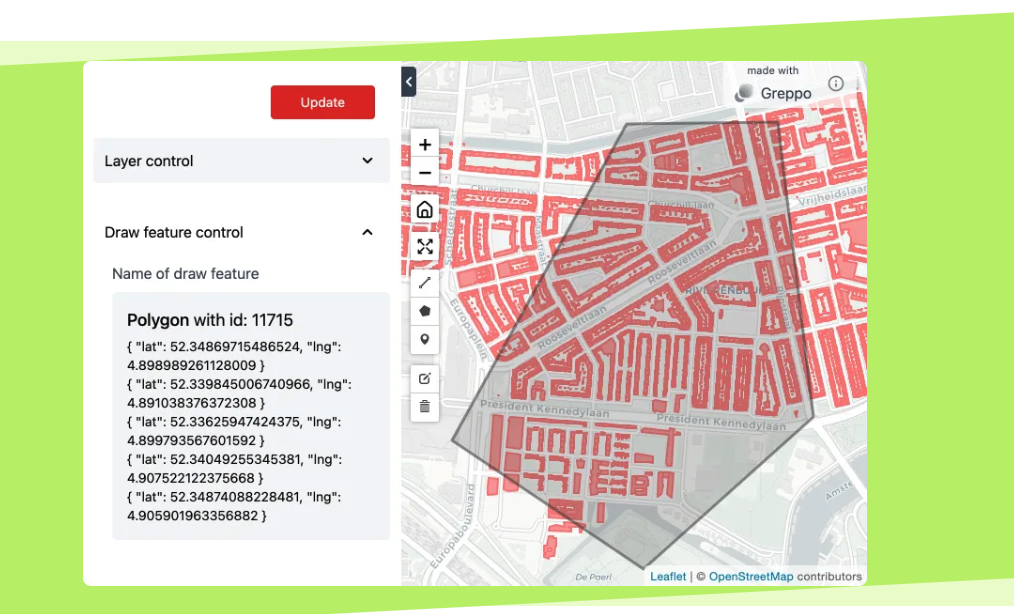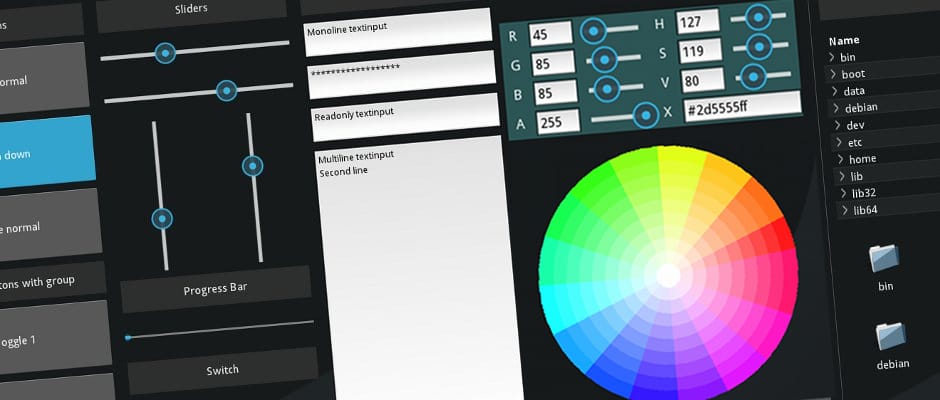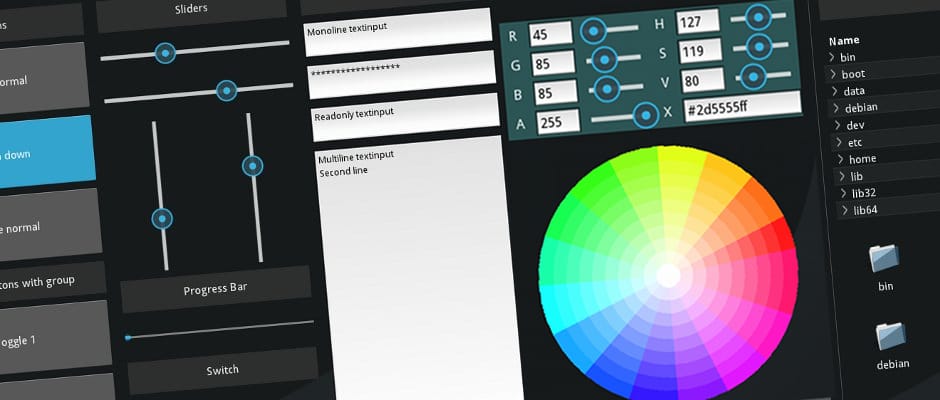8 Python Desktop Development: Selecting the Ideal Framework for Cross-Platform Apps
Are You Truly Ready to Put Your Mobile or Web App to the Test?
Don`t just assume your app works—ensure it`s flawless, secure, and user-friendly with expert testing. 🚀
Why Third-Party Testing is Essential for Your Application and Website?We are ready to test, evaluate and report your app, ERP system, or customer/ patients workflow
With a detailed report about all findings
Contact us nowTable of Content
Python is a versatile, high-level programming language renowned for its simplicity and readability, making it ideal for both beginners and professionals. Its extensive libraries and robust community support have established it as a go-to language across various domains.
In data science, Python excels in data analysis, visualization, and machine learning. Powerful libraries like Pandas, Matplotlib, and Scikit-learn enable data scientists to analyze large datasets and build predictive models, such as customer segmentation algorithms.

For web development, Python frameworks like Django and Flask facilitate rapid and secure web app creation. Django, for instance, streamlines backend development with pre-built components, allowing developers to focus on feature creation. A notable example is Instagram, which was partially built using Django.

In data engineering, Python manages tasks such as data extraction, transformation, and loading (ETL). Tools like Apache Airflow and Luigi, built in Python, orchestrate complex workflows in data pipelines. A typical use case involves automating data collection and processing for reporting systems.
For game development, Python—combined with libraries like Pygame—is used to create 2D games. It's particularly favored for rapid prototyping and educational game development. Simple games such as Tetris clones and educational apps are common Python projects in this field.
In desktop application development, frameworks like PyQt and Tkinter enable the creation of cross-platform GUI applications. PyQt, for example, is used to build complex desktop apps with modern user interfaces, including IDEs and music players.
Python's flexibility renders it indispensable across industries, empowering developers to efficiently tackle a diverse array of projects.
Python offers several excellent frameworks for developing cross-platform desktop applications that support Windows, Linux, and macOS. Here's an overview of the best options for creating desktop apps using Python.
Popular Desktop Apps built with Python
- Calibre – E-book management software used to organize, read, and convert e-books.
- Trello Desktop – Task management app with a Python-powered backend.
- Blender – Open-source 3D creation suite with Python scripting for add-ons and extensions.
- Dropbox – Cloud storage and file synchronization service, originally developed in Python.
- Gramps – Free Genealogy program that helps users build family trees.
- Eve Online Launcher – Game launcher for the MMORPG Eve Online, using Python for its UI.
- YouTube-DL – Command-line video downloader built in Python.
- Deluge – Lightweight, cross-platform BitTorrent client.
- GNOME’s Anaconda Installer – Fedora and Red Hat’s installer tool for configuring Linux systems.
- BitTorrent – Peer-to-peer file-sharing software with a backend in Python.
- Spyder – Scientific Python Development Environment, commonly used for data analysis and machine learning.
- FreeCAD – Open-source parametric 3D CAD modeler for engineering, architecture, and product design.
- LibreOffice – Office suite, with Python used for scripting macros and extensions.
Python Desktop Frameworks
In the following list, you will find the best open-source framework apps to build Python desktop apps.
1. PyQt (Qt for Python)
- Platform: Windows, Linux, macOS
PyQt is a set of Python bindings for Qt, one of the most popular cross-platform GUI frameworks. It provides a rich set of widgets, layout tools, and event handling options, making it highly versatile for desktop app development.
- Features:
- Provides native look and feel across different platforms.
- Extensive documentation and large community support.
- Can create complex UIs with drag-and-drop support using Qt Designer.
- High performance with support for multithreading.
- License: GPL or commercial.
- Resources: PyQt Documentation
2. Tkinter
- Platform: Windows, Linux, macOS
Tkinter, the standard GUI library for Python, comes bundled with most Python distributions. Its lightweight nature and user-friendly interface make it an excellent choice for developing small-scale or straightforward desktop applications.
- Features:
- Built into Python, no extra installation required.
- Simple API and easy learning curve for beginners.
- Wide availability of widgets such as buttons, labels, text boxes, etc.
- Adequate for basic desktop applications.
- License: Open source (included in Python’s standard library).
- Resources: Tkinter Documentation
3. Kivy

Kivy is an open-source Python framework for developing multitouch applications. While it can be used for desktop apps, its true strength lies in mobile and touch interfaces. Its modern, lightweight, and cross-platform nature makes it ideal for creating interactive applications.
- Features:
- Supports multitouch, gestures, and animations.
- Customizable with its own language (Kv language) for UI design.
- Optimized for speed using GPU rendering.
- Can build both desktop and mobile apps.
- License: MIT.
- Resources: Kivy Documentation
4. wxPython
- Platform: Windows, Linux, macOS
wxPython is a Python wrapper for the wxWidgets C++ library, providing native interfaces for each platform. It offers a rich set of tools for creating sophisticated GUIs, all with a platform-specific look and feel.
- Features:
- Native widgets for a consistent look across platforms.
- Offers both a simple API for beginners and advanced capabilities for professionals.
- Supports a range of modern desktop features such as docking windows, native dialogs, and dynamic layouts.
- Extensive community support.
- License: LGPL.
- Resources: wxPython Documentation
5. PyGTK (GTK for Python)
- Platform: Windows, Linux, macOS
PyGTK, the Python wrapper for GTK (GIMP Toolkit), is a popular framework primarily used in Linux desktop environments like GNOME. It offers a flexible and robust toolkit for creating both simple and complex graphical user interfaces.
- Features:
- Native look for Linux, with good support for Windows and macOS.
- Flexible layout management and customizable widgets.
- Good integration with other GNOME and GTK-based software.
- Frequent updates and active development.
- License: LGPL.
- Resources: PyGTK Documentation
6. PySide (Qt for Python, officially supported by Qt)
- Platform: Windows, Linux, macOS
PySide is another set of Python bindings for the Qt application framework. Like PyQt, it provides Qt's capabilities for Python, but with official support from the Qt Company and a different licensing model.
- Features:
- Supports the same powerful UI components as PyQt.
- Official support by the Qt community.
- Compatible with Qt Designer for drag-and-drop GUI design.
- Modular and extensible for various use cases.
- License: LGPL.
- Resources: PySide Documentation
7. Electron with Python (using Eel or Pywebview)
- Platform: Windows, Linux, macOS
While Electron isn't natively a Python framework, you can create Python desktop apps with Electron-like functionality using libraries such as Eel or Pywebview. These tools enable you to combine web technologies (HTML, CSS, JavaScript) with Python backends to build robust desktop applications.
- Features:
- Build desktop apps using web technologies (ideal for those familiar with front-end development).
- Allows embedding Python as the backend logic.
- Cross-platform with the same UI experience across operating systems.
- Access to system features like file access and notifications through JavaScript.
- License: Varies depending on the combination of tools used.
- Resources: Eel Documentation, Pywebview Documentation
8. Flask/FastAPI + Pywebview
- Platform: Windows, Linux, macOS
While Flask and FastAPI are primarily web development frameworks, pairing them with Pywebview enables developers to craft desktop applications. This combination uses Python for backend logic and a web-based frontend.
Such an approach harnesses the power of modern web frameworks for UI design while retaining Python's strengths in data processing and backend operations.
- Features:
- Leverages familiar web frameworks like Flask or FastAPI.
- Seamlessly integrates Python backend logic with web-based UIs.
- Enables straightforward desktop app deployment via Pywebview.
- Ideal for creating lightweight, browser-style desktop applications.
- License: MIT (Flask, FastAPI), BSD (Pywebview).
- Resources: Pywebview Documentation
9. BeeWare (Toga)
- Platform: Windows, Linux, macOS (and mobile platforms: iOS, Android)
BeeWare's Toga is a Python-native, cross-platform toolkit for building apps with native interfaces across multiple platforms. It boasts an elegant API, making it particularly valuable for developers aiming to create cross-platform applications using pure Python.
- Features:
- Provides native widgets for each platform, ensuring a consistent look and feel.
- Written entirely in Python, eliminating the need for external bindings or dependencies.
- Offers a unified interface for developing applications across both desktop and mobile platforms.
- Actively growing and evolving, with ongoing development and improvements.
- License: BSD.
- Resources: BeeWare Documentation
Frameworks Comparison
Here's a comparison table that outlines the pros, cons, use cases, and license for each of the frameworks mentioned:
| Framework | Pros | Cons | Use Cases | License |
|---|---|---|---|---|
| PyQt | - Powerful and feature-rich - Native look on all platforms - Extensive documentation and community support |
- GPL license for free use (commercial license required for proprietary apps) | - Complex UIs - Cross-platform desktop apps - Enterprise apps |
GPL/Commercial |
| Tkinter | - Built-in with Python - Easy to learn - Lightweight - No additional installation |
- Basic GUI design - Limited advanced features |
- Simple desktop apps - Educational tools - Prototypes |
Open source (included in Python) |
| Kivy | - Supports multitouch - Works on both desktop and mobile - GPU acceleration |
- Not ideal for native desktop UIs - Limited native widget set |
- Touch-based apps - Interactive apps - Cross-platform mobile/desktop |
MIT |
| wxPython | - Native widgets - Extensive set of features - Cross-platform consistency |
- Complex to learn compared to simpler frameworks | - Full-featured desktop apps - Cross-platform GUIs |
LGPL |
| PyGTK | - Strong native support on Linux - Flexible and customizable widgets - Good performance |
- Better suited for Linux than macOS/Windows - Fewer updates compared to Qt |
- Linux apps - GNOME desktop applications |
LGPL |
| PySide | - Official support from Qt - Same capabilities as PyQt - LGPL license for free use |
- Somewhat slower development updates compared to PyQt | - Enterprise desktop apps - Cross-platform UIs |
LGPL |
| Electron (Eel/Pywebview) | - Leverages web development skills - Use of modern web tech (HTML, CSS, JS) - Cross-platform |
- Large memory footprint - Not ideal for resource-intensive apps |
- Browser-style apps - Cross-platform UIs - Apps using web technologies |
Varies (depends on tech stack) |
| Flask/FastAPI + Pywebview | - Allows use of modern Python web frameworks - Lightweight for web-based apps - Easy to integrate backend |
- Requires knowledge of both web and desktop development | - Web-app-like desktop apps - Lightweight utilities |
MIT (Flask, FastAPI), BSD (Pywebview) |
| BeeWare (Toga) | - Native UI on each platform - Pure Python - Cross-platform desktop and mobile support |
- Still in active development - Fewer features compared to mature frameworks |
- Cross-platform desktop/mobile apps - Native Python development |
BSD |
Summary:
- PyQt and PySide are ideal for full-featured, cross-platform enterprise applications with complex UIs. They offer the power of the Qt framework but with different licensing models.
- Tkinter is best suited for simpler desktop apps and prototyping, thanks to its ease of use and integration with Python.
- Kivy excels in developing touch-based and interactive applications across mobile and desktop platforms.
- wxPython and PyGTK are solid choices for native-looking desktop applications. wxPython offers broader cross-platform support, while PyGTK excels on Linux systems.
- Electron-based tools (Eel, Pywebview) are ideal for browser-style apps using web technologies. However, they may consume more memory than other frameworks.
- BeeWare (Toga) is a promising framework for developers seeking pure Python solutions across desktop and mobile platforms. While still evolving, it offers exciting possibilities for cross-platform development.
Each framework has its strengths, depending on your project's needs, the target platforms, and licensing considerations.
The Bottom Line:
When selecting a framework, consider the application's complexity, your familiarity with web or desktop technologies, and your target operating systems.
For instance, PyQt and wxPython excel at creating robust native apps, while Kivy shines in touch-based and multi-platform environments (particularly for mobile apps).
Tkinter remains the most beginner-friendly option, and BeeWare presents an intriguing, fully Python-native solution for cross-platform development.











